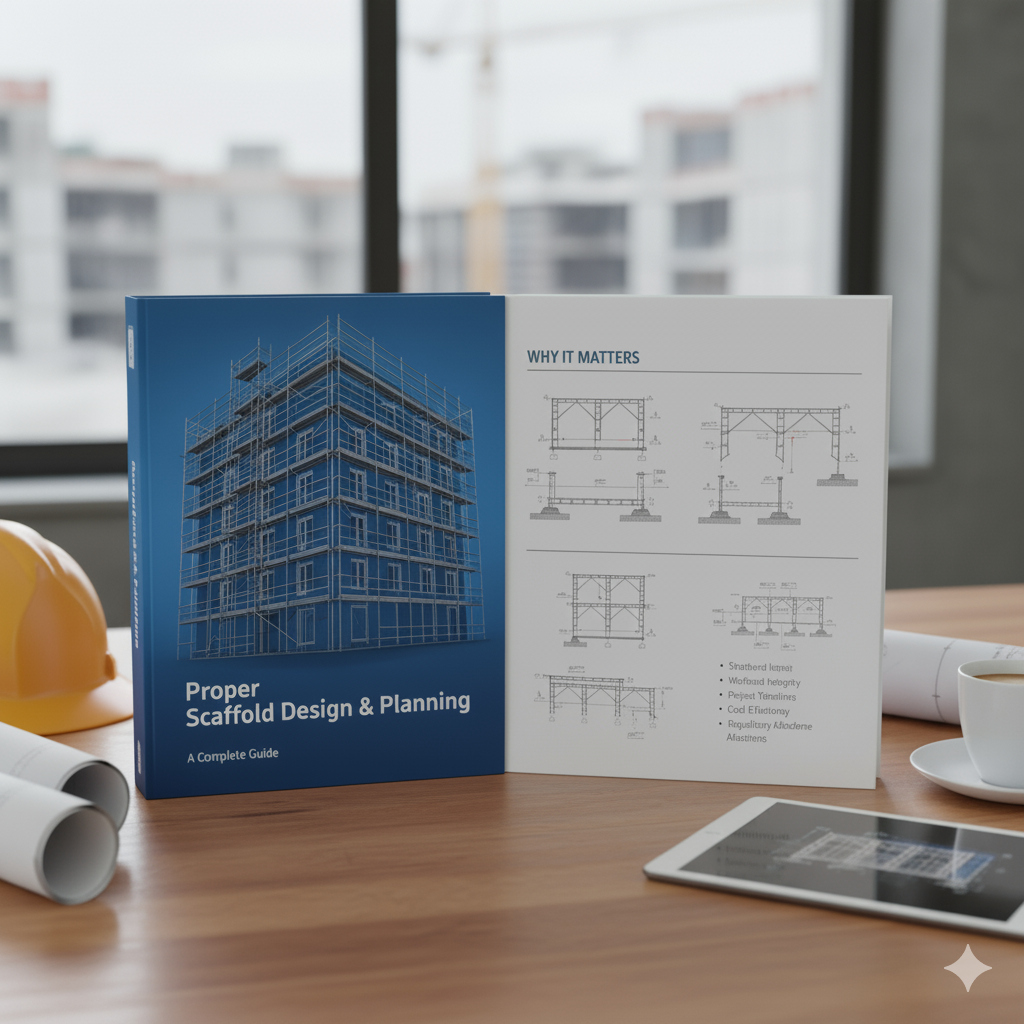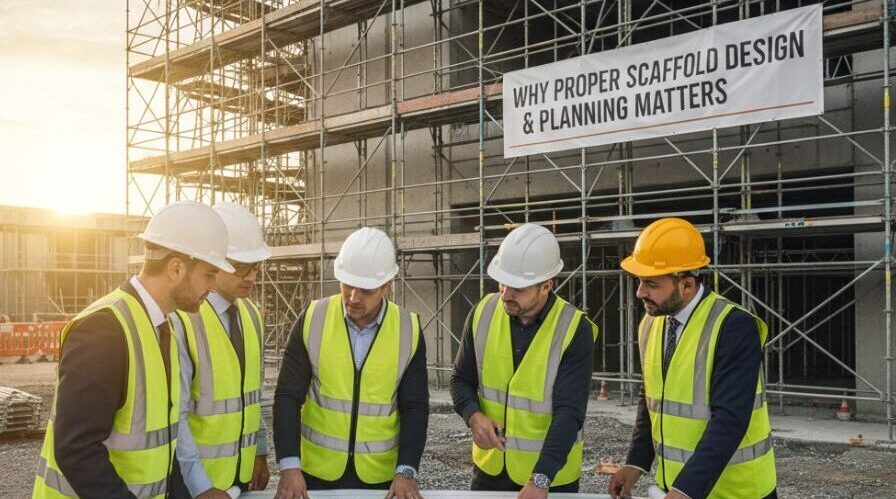Scaffold Design and Planning- Behind every successful building, bridge & any complex infrastructure, one thing always plays a crucial role: Scaffolding. It is one of the most essential elements that provide safety and reliability across the high-work areas. From erecting a commercial tower building to maintaining industry facilities, scaffolds have always been used in all safety constructions. Every successful scaffolding is constructed behind the strategic design and planning.
Under the planning and designing process of scaffolding, it is not just about joining planks and poles, but also goes more than that. A strategic plan is built behind the manufacturing and designing of scaffolding. Without proper planning, we can’t make the scaffolding safe and regulate it under the safety standards.
In this detailed guide, we will explore the things and the importance of proper scaffold design and planning. If you are also planning to get scaffolding hired for your construction project, then always make sure that your scaffolding provider designs it under strict compliance; otherwise, it can be risky. Stay connected to know more about why Scaffold Design and Planning Matters.
Table of Contents
ToggleImportance of Proper Scaffold Design and Planning

Here are the importance of proper scaffolding design & planning:
Ensure Safety on Site: To create a safe environment on site, it is important to get the proper scaffolding design. In any construction work, safety is always an attention seeker that can be ensured with proper planning & design.
Improve Efficiency & Productivity: Scaffolding design meets the specific needs of a project and also allows the workers to work safely and confidently without any falling risk. Due to working confidentially on the site, workers can easily minimize their downtime and improve productivity.
Reduces Cost: By planning properly for scaffolding, it also reduces the cost as it reduces the wastage of material and unnecessary scaffold structure. If the site reduces the rework due to proper planning, then it directly reduces the overall cost.
Accommodates Project Specific Needs: As we all know, all the sites have their own safety needs, which is why it is important to get the custom scaffolding structure. Scaffolding design according to the site provides you with more flexibility for different types of tasks.
Ensure Legal Standards: The design and planning of scaffolding must match the legal standards of safety. With this, you not only protect workers but also protect yourself from penalties and legal issues. These are some reasons why scaffolding design and planning matter.
What Steps Should Be Followed for Effective Scaffold Design and Planning?
Here, we are sharing some steps that should be followed for effective scaffold design & planning:
Step 1: Site Assessment
First of all, site assessment is most important before deciding on the design of scaffolding. In this, companies should evaluate the ground condition, weather factor, space constraints and many more to avoid any future consequences.
Step 2: Load Calculation
After the site assessment, calculate the load. In this, you will have to determine how much weight scaffolding is needed for a construction site. In this calculation, you will have to include workers, tools, equipment and material.
Step 3: Select Scaffold Type
After the load calculation, start recognizing the scaffold type, such as frame, tube, system, and more, based on the project requirements. The type of scaffolding must ensure the functionality and safety on site.
Step 4: Material Selection
Quality itself says the safety of the site. A right and quality material, such as aluminum and steel, for scaffolding is essential. It directly improves the safety of your site. Also, ensure that your scaffolding meets regulatory compliance.
Step 5: Structural Design
Scaffolding design should meet with site structure, such as height, width, bracing, anchoring and more. If you design your scaffolding properly according to structure, then it gives stability to the platform and allows workers to work safely.
Step 6: Compliance Check
A compliance check is one of the steps that should be done before hiring the scaffolding company because, without regulatory compliance, you can be penalized by the government of a specific country, and they can also take legal action against you.
Step 7: Assembly Plan
An assembly plan is one of the most important steps that ensures that scaffolding is erected safely. Without a proper assembly plan, the risk of injury rises. Here are some key aspects of an effective assembly plan:
- Sequencing of assembly
- Safety measures during assembly
- Load management
- Verification at each edge
- Communication
- Documentation
Step 8: Inspection & Maintenance
Maintaining regular safety is also a crucial step for scaffolding. This is why you should regularly inspect scaffolds for a safe working environment. Sometimes, the weather can compose the scaffolding and create a risky work environment. Here are some key points of inspection and maintenance of scaffoldings:
- Pre-use inspection
- Load check
- Weather & environmental considerations
- Maintenance actions
- Safety Signage & Barrier
Final Thought
In this detailed guide, we have covered mostly everything about the importance of Scaffold Design and Planning. As we all know, proper scaffolding design matters a lot for the safety of workers during high-risk projects and also improves work efficiency. If we get well-designed scaffolding, then it also contributes to seamless project executions. If you are also planning to get the scaffolding in Brisbane, then you must contact Supreme Scaffolding for secure and regulatory compliance scaffolding designs.
FAQ about Why Proper Scaffold Design and Planning Matters: A Complete Guide
Q. Which safety standard should we consider for scaffolding design?
Answer: All the scaffolding designs should comply with local and international safety standards, including:
- Work Health & Safety Regulations
- AS/NZS 1576
Q. How can proper planning reduce the cost of scaffolding?
Answer: Proper planning of scaffolding reduces the cost of scaffolding in many ways, such as:
- Reduce material wastage
- Prevent accidents
- Efficient labour deployment
- Reusable design
Q. Which risk always rises with improper scaffolding design & planning?
Answer: With improper scaffolding design, various risks arise:
- Falling from a height
- Scaffold collapse under load
- Tools and materials injury loss
Q. How does scaffolding planning improve productivity?
Answer: Scaffolding proper planning improves productivity by providing easy access, minimizing downtime, reducing worker falling risk and streamlined workflow.

